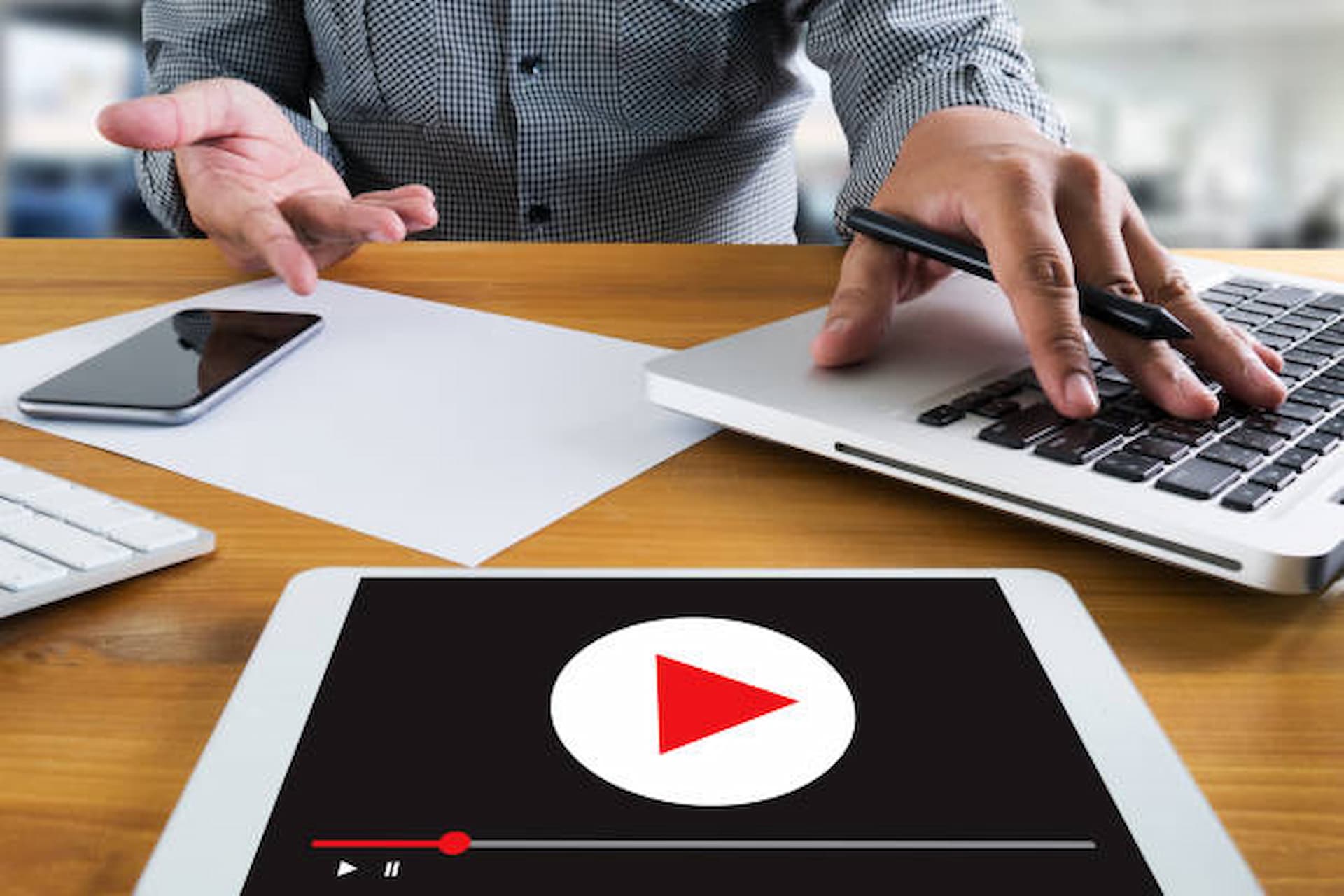Key Takeaways
- Analyze how video-to-text conversion is reshaping content creation.
- Delve into the multifaceted advantages of transforming video content into text.
- Highlight the progressive impact of video-to-text technology on accessibility and discoverability.
Table of Contents
- Introduction to Video-to-Text Technology
- The Role of Video Transcription in Digital Communication
- Improving Content Accessibility with Video-to-Text Conversion
- Bridging the SEO Gap: Enhancing Discoverability through Transcription
- Applications: From Education to Marketing
- Quality and Accuracy Considerations in Transcription
- The Future of Video-to-Text: Trends and Predictions
- Choosing the Right Tools for Video-to-Text Conversion
- How to Get Started with Video-to-Text Services
Introduction to Video-to-Text Technology
In the digital landscape, where multimedia formats rapidly evolve, the advent of video-to-text technology stands out as a revolutionary tool in content creation. This transformative method enables creators to enrich their offerings by providing textual counterparts to dynamic video content. AI video transcription is at the forefront of this innovation, which leverages artificial intelligence to convert spoken language into accurate text seamlessly. With the power to transcend traditional communication barriers, the potential of video-to-text technology is immense and holds promise for significantly broadening the appeal and reach of digital content. When discussing the encompassing reach of multimedia, it is crucial to recognize that not all audience segments can engage with videos due to various constraints, such as situational or auditory impairments. This is where video-to-text technology becomes indispensable, enabling content producers to cater to diverse preferences and requirements. Not only does this enhance content accessibility, but it also allows creators to capitalize on the written word’s inherent benefits, thus enriching viewer experiences and fostering a more inclusive content landscape.
The Role of Video Transcription in Digital Communication
Video transcription is critical in bridging the gap between auditory and written communication, greatly facilitating the dissemination and consumption of information. The transcripts derived from videos represent an inclusive approach to content delivery, ensuring that individuals who struggle with auditory processing or those working in sound-sensitive environments have equal access to the information. Moreover, transcription is an invaluable resource for professional sectors, such as legal firms and healthcare organizations, which commonly require precise documentation for record-keeping, compliance, and patient care purposes. Through the rendering of spoken words into text, video transcription aids in achieving accuracy and clarity, which is often critical in these professional contexts.
Additionally, in digital communication, video transcripts significantly enhance the user experience. They enable viewers to easily follow along, take notes, or skim content to specific information. With the strategic use of transcription, digital communicators can extend the reach and utility of their video content, satisfying the diverse needs of their audiences and clients with remarkable efficiency and efficacy.
Improving Content Accessibility with Video-to-Text Conversion
The digital age demands a robust commitment to content accessibility, a tenet that ensures information is consumable by all audiences regardless of physical limitations. Video-to-text conversion is a powerful means to this end, as it democratizes access to video content by transcribing auditory information into a visual format, accommodating those with hearing disabilities. The role of this technology in promoting an egalitarian digital ecosystem cannot be understated—especially considering the global prevalence of hearing loss, as characterized in the World Health Organization’s data, which highlights the necessity for accessible content solutions.
The benefits of video-to-text conversion are not exclusive to individuals with auditory challenges; they also extend to people who may prefer reading to listening or viewing. This preference can arise for language learners whose written content offers a tangible resource to support comprehension and vocabulary acquisition. Thus, by implementing video-to-text solutions, content creators empower their audience with the freedom to choose how they wish to engage with content, ultimately elevating the educational value and inclusivity of their digital materials.
Bridging the SEO Gap: Enhancing Discoverability through Transcription
Discoverability is a cornerstone of successful digital content strategy, mainly achieved through integrating Search Engine Optimization (SEO). Transcribed video content significantly contributes to SEO by providing search engines with rich, indexable text. This allows for strategically embedding key phrases and terms within transcripts, creating a more robust digital footprint that is more likely to surface in organic search results. As video continues to dominate user engagement, harnessing the transcripts for SEO purposes enables creators to bridge the inherent SEO gap associated with non-textual content. Consequently, creators can achieve the paradoxical feat of making their video content more visible and prominent in the predominantly text-based realm of search engine results.
Moreover, when properly indexed, transcripts can serve as a treasure trove of information, laying a foundational blueprint for metadata that further bolsters SEO efforts. Integrating schema markup and other metadata drawn from transcripts makes video content significantly more discoverable to target audiences, driving organic traffic and engagement. The meticulous transcription of video content is thus instrumental in aligning with Google’s ever-evolving algorithms and ensuring that video assets are fully leveraged within the digital marketing space.
Applications: From Education to Marketing
The versatility of video-to-text technology is evident across a spectrum of applications, from academic settings to the dynamic world of digital marketing. Institutions increasingly turn to transcripts to support varied learning modalities in education, allowing students to engage with lectures and resources visually and textually. This multimodal approach caters to learning styles and paces, contributing to a more robust, inclusive, and effective educational experience.
In marketing, combining visual and textual elements has enhanced viewer engagement, with transcripts and captions ensuring the messaging resonates even when audio is turned off. Marketers have observed that leveraging video-to-text conversion in their campaigns, alongside user-generated content creation , can lead to higher retention rates and increased viewer dwell time—critical factors in the conversion funnel. Consequently, the strategic use of transcripts amplifies the potential impact of video content and translates into tangible business gains. Journalism, too, reaps the benefits of transcription services. By providing accurate records of interviews and events, journalists are equipped to create more trustworthy and precise reports, which are paramount to upholding the profession’s integrity. Additionally, transcribed material adds an extra layer of content for audiences to consume, whether in the form of bite-sized quotes for social media or full-length articles for online publications.
Quality and Accuracy Considerations in Transcription
While the utility of video-to-text technology is abundantly clear, its effectiveness is contingent upon the quality and accuracy of transcription. High fidelity in transcription is critical—errors can distort the intended message and negatively impact user trust and satisfaction. To achieve an exemplary standard, sophisticated transcription tools are necessary to navigate the intricacies of language, such as accents, dialects, colloquialisms, and technical jargon. Moreover, beyond the mere conversion of spoken word to text, quality transcription services strive to preserve the full context of the original content, recognizing speaker nuances, accurately capturing non-verbal cues, and maintaining the intended tone of the dialogue. In this pursuit of transcription excellence, the role of human oversight cannot be overstated. Despite significant strides in AI and automated transcription services, the discerning human ear remains invaluable in ensuring that transcripts are correct, coherent, and contextually appropriate. By blending cutting-edge technology with human expertise, content creators can rest assured that their transcript output maintains the highest possible quality, serving as a faithful and effective textual representation of their video content.
The Future of Video-to-Text: Trends and Predictions
As we look forward to the horizon of content creation, it is evident that video-to-text technology will persist and increase and integrate more seamlessly with digital experiences. Ongoing advancements in Artificial Intelligence and machine learning play pivotal roles in these developments, promising excellent accuracy and rapid turnaround times for transcription services. Innovations are likely to manifest in enhanced support for multilingual content, allowing creators to cater to a global audience with an even greater facility. Among the most anticipated trends in video-to-text technology is the rise of real-time transcription services. Such cutting-edge offerings will dramatically improve accessibility for live events and broadcasts, providing instant textual renditions for viewers, which is indispensable in today’s demand for immediate information. With these advancements, the potential for content repurposing and extended reach through transcripts will soar, underscoring the critical importance of staying attuned to evolving tech trends in the video-to-text domain.
Choosing the Right Tools for Video-to-Text Conversion
Identifying the optimal tools for video-to-text conversion is a decisive factor for content creators intent on maintaining a competitive edge. Practical considerations such as functionality, speed, accuracy, and user-friendly interfaces are paramount in this selection process. However, creators should also seek out services highly regarded within the industry, as indicated by reliable evaluations and benchmarks like those performed by the National Institute of Standards and Technology (NIST), as their ratings reveal critical insights into the performance of such software tools. Creators have a spectrum of choices ranging from fully automated AI-driven services, which promise near-instantaneous results, to bespoke transcription offerings curated by skilled professionals who ensure meticulous accuracy. Each creator must carefully weigh their specific needs, considering the balance between the immediacy of AI-generated transcripts and the nuance captured through professional services, to select the tool that aligns with their content strategy and their ethos of quality and reliability.
How to Get Started with Video-to-Text Services
Embarking on the use of video-to-text services requires a strategic approach. Creators should begin by assessing their specific needs and exploring questions such as the importance of precision in their projects and the required turnover time. Once these prerequisites are identified, the logical next step is to review and trial various services, gauging firsthand their ease of integration into existing workflows and the quality of their output. Finding the ideal match, however, is a challenging checkpoint; creating a structured strategy for utilization is crucial to capitalize fully on the potential of video-to-text technology.
Through a carefully chosen service and a well-thought-out application plan, creators can transform their content offerings, appeal to a broader audience, and embrace a future where content is seen, heard, and read across myriad platforms and formats.





